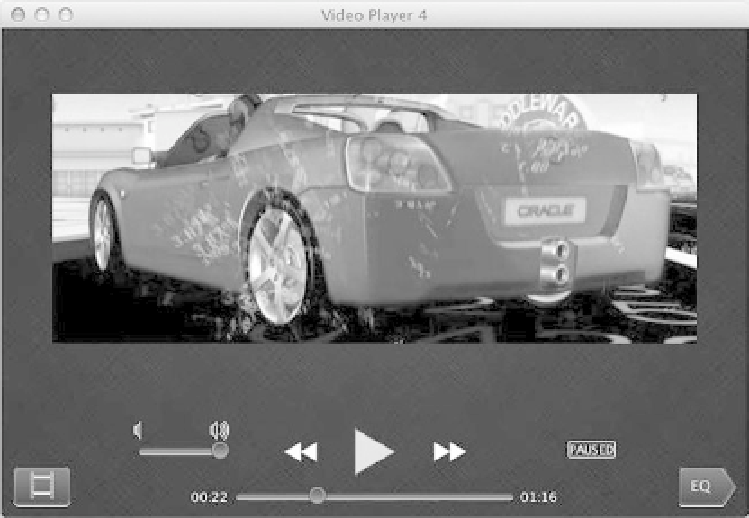Java Reference
In-Depth Information
The next step is to replace the
MetadataView
with this new
VideoView
. Listing 9-37 shows the modified code from
the
VideoPlayer4
class (formerly
AudioPlayer4
). Instead of creating the
MetadataView
, we now create the
VideoView
,
passing it the
mediaModel
instance. The
VideoView
's view node is then retrieved and set as the center node of the
BorderPane
in place of the
MetadataView
's view node. That is literally all there is to it!
Listing 9-37.
Creating the
VideoView
and Adding It to the Application's First Page
private Parent createPageOne() {
videoView = new VideoView(mediaModel);
playerControlsView = new PlayerControlsView(mediaModel);
playerControlsView.setNextHandler((ActionEvent arg0) -> {
rootNode.getChildren().setAll(page2);
});
final BorderPane bp = new BorderPane();
bp.setCenter(videoView.getViewNode());
bp.setBottom(playerControlsView.getViewNode());
return bp;
}
One final finishing touch is to change the music note icon on the open button to something more appropriate. We
therefore created a filmstrip icon and replaced the name of the image file used by the button in the application's style sheet.
#openButton {
-fx-graphic: url("resources/filmstrip.png");
}
The final result of our conversion is shown in Figure
9-12
playing a promotional video from Oracle's web site.
All of the controls work exactly the same as they did in the version that played audio files, right down to the equalizer.
You just have to love JavaFX, don't you?
Figure 9-12.
The converted video player in action

Search WWH ::

Custom Search